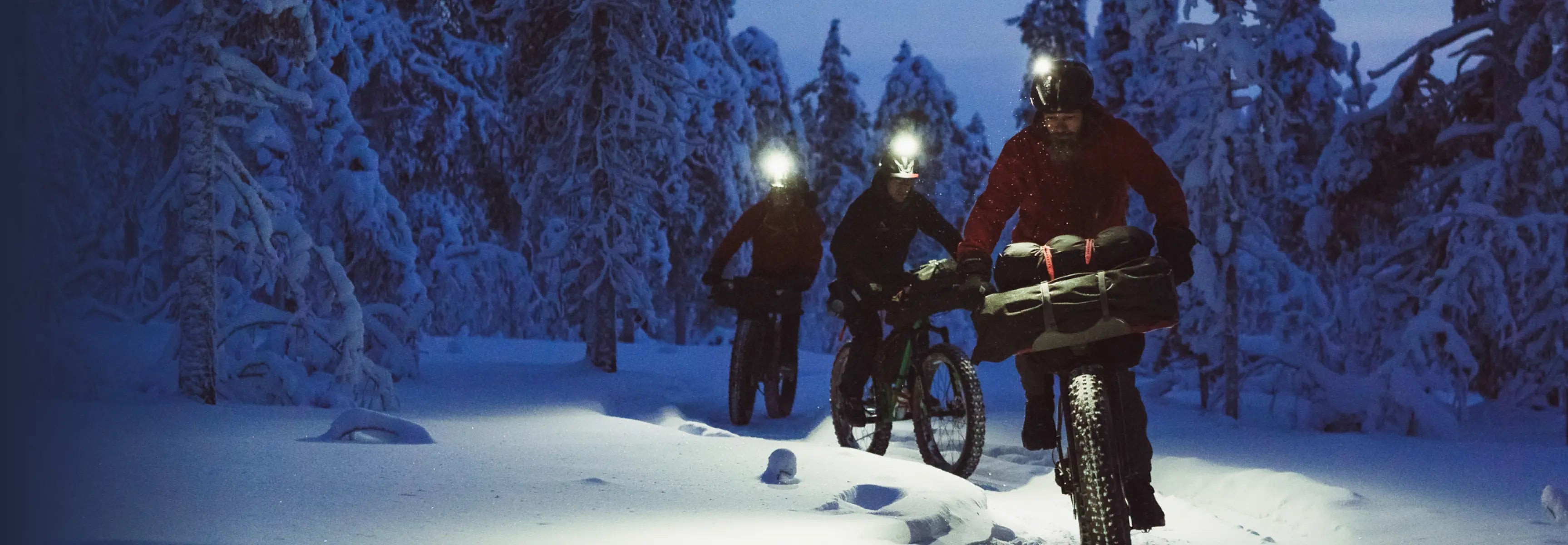
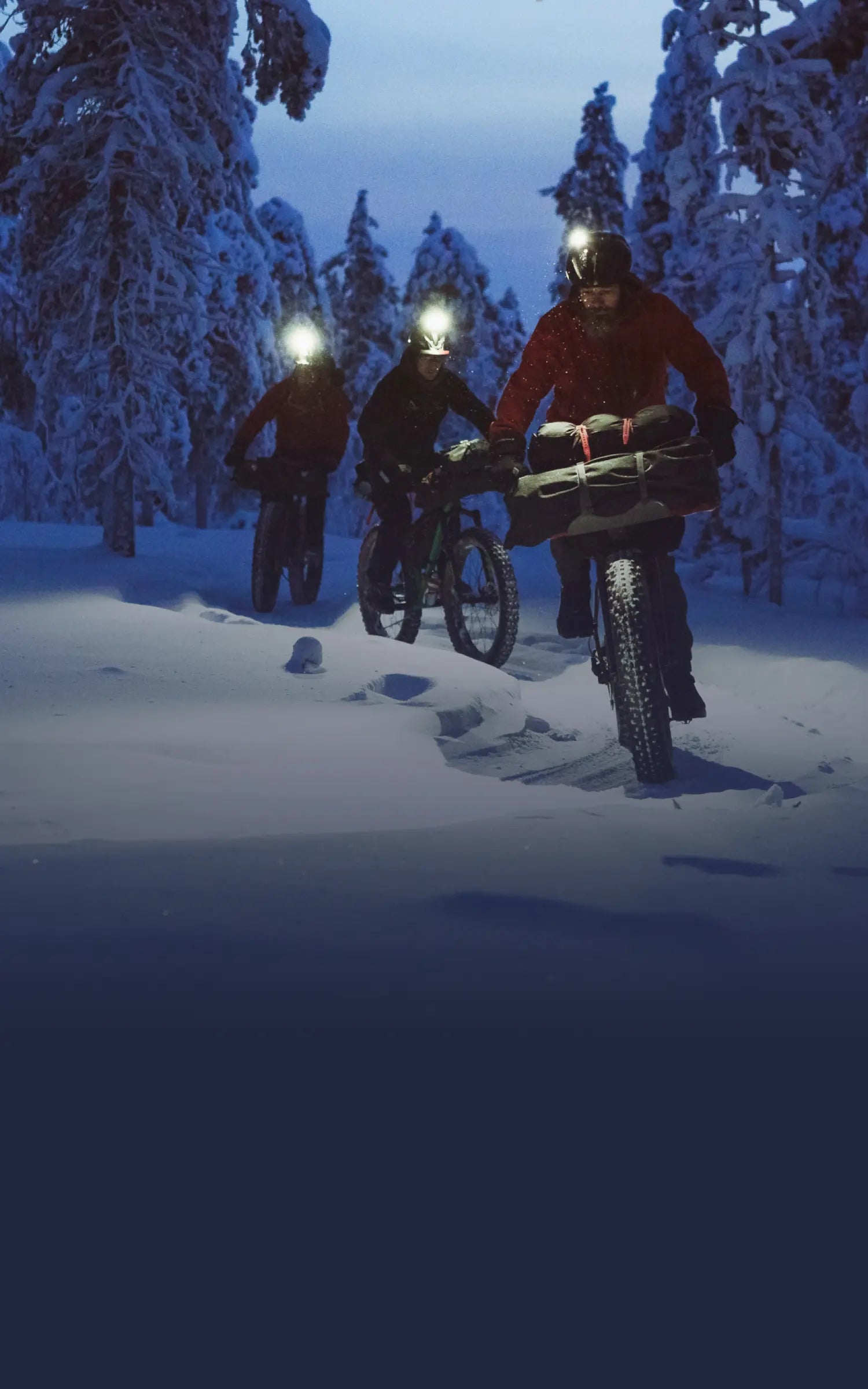
Suunto Blog
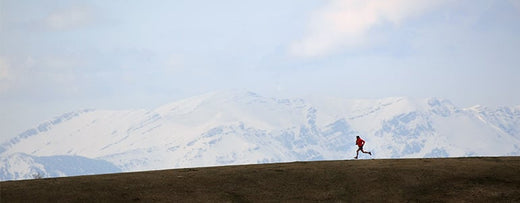
Kilian Jornet's top 5 training routes
How do you measure up to the world's best trail runner? Why not run one of his favorite training routes and find out!
Kilian has lived and trained in places considered dream destinations by trail runners everywhere. Alaska, Norway, the Rocky Mountains, the Alps, Patagonia – whereever there are impressive mountains Kilian has probably smashed the local trails there. Who better to ask about the best trail running routes in the world?
Whether you want to try to match his stats or to literally follow in his footsteps, Kilian's top five training routes will be a source of inspiration.
Kilian ascending Mont Blanc. © Jordi Saragossa
Ersfjord Traverse, Kvaloya, Norway
Distance: 18.09 kmTime: 04h49mAscent: 2758 mDecent: 2751 mHighest point: 1093 mWhy: "It’s a combination of scrambling and running. The landscapes are awesome during the entire run which follows narrow ridges above the fjord. It’s a technical run with a lot of elevation gain," Kilian says.
Aiguille de l’M, Chamonix, France
Distance: 17.10 kmTime: 03h39mAscent: 1782 mDecent: 1744 mHighest point: 2844 mWhy: "Great running and some climbing to Aiguille de l’M, with great views all over the Mont Blanc massif," Kilian says.
Mont Blanc, Chamonix, France
Distance: 24.78 kmTime: 05h57mAscent: 3808 mDecent: 2461 mHighest point: 4815 mWhy: "Up to Mont Blanc, either the direction in the map below or via Gouter Hut. It’s a long elevation run with some altitude and amazing views of the Alps from summit."
Pic Carlit, Font-Romeu-Odeillo-Via, French Pyrenees
Distance: 21.30 kmTime: 03h12mAscent: 861 mDecent: 864 mHighest point: 2633 mWhy: "Running from Font-Romeu-Odeillo-Via up to Pic Carlit and Lac de Bouillouses you can see the beauty and the wilderness of the Pyrenees."
Kilian striding out in the Pyrenees. © Monica Dalmasso
Grand Teton, Rocky Mountains, USA
Distance: 19.27 kmTime: 02h54mAscent: 2264 mDecent: 2260 mHighest point: 4197 mWhy: "The Teton Range in the Rocky Mountains is a wonderful area for running with wild animals, and technical rocky trails," Kilian says.
Relaxing in the wilds of the Teton Range. © Montaz Rosset Visuals
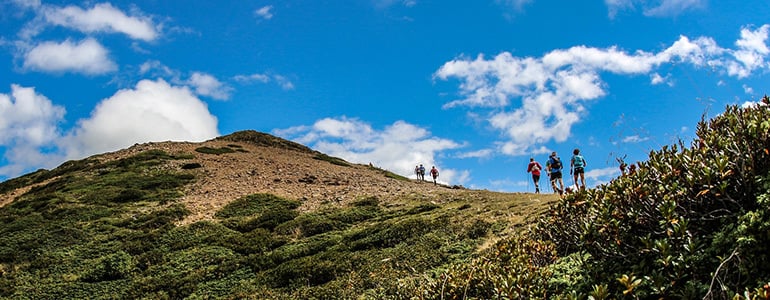
The stage race across the Alps in 8 pictures
The GORE-TEX® TRANSALPINE-RUN is not for the faint hearted. Reaching the finish line of the eight-stage race across the Alps will take every scrap of your being. Get a taste of this epic adventure with the eight images below!
The 11th edition of the GORE-TEX® TRANSALPINE-RUN finished last week and Suunto was the official time sponsor. The eight-stage, 268 km race across the Alps from Germany to Italy is a gruelling test of endurance. Because it crosses exposed and sometimes isolated alpine terrain, competitors must race in two man teams for their own safety. Trail runner and ski mountaineer Philipp Reiter, along with teammate Iker Karrera, won the race in 2012. This year, due to an injury, the 24-year-old German could not compete so instead he photographed each stage of the race.“Crossing the Alps from north to south is a kind of a dream,” he says. “For eight days you’re in your own world.”
Click here to see this year's results.
Stage one: Oberstdorf, Germany to Lech, Austria
Distance: 34.60 kmVertical ascent: 2083 mVertical descent: 1469 m
All good times and smiles on day one. © Philipp Reiter
“This year the first stages were really hot, 36° C, so a lot of people became dehydrated and some collapsed,” Philipp says. “The race medical team had a lot of things to do.”
Stage two: Lech, Austria to St. Anton am Arlberg
Distance: 24.70 kmVertical ascent: 1899 mVertical descent: 2040 m
© Philipp Reiter
“People are used to running, but not everyday for that long,” Philipp says. “You have to make sure your body is able to deal with the distance and vertical gain for eight days.”
Stage three: St. Anton am Arlberg, Austria to Landeck, Austria
Distance: 39.60 kmVertical ascent: 2658 mVertical descent: 3133 m
© Philipp Reiter
“In my experience, stage three is really tough because you are feeling exhausted from the first two days, but know there’s another five days ahead of you,” Philipp says.
Stage four: Landeck, Austria to Samnaun, Switzerland
Distance: 45.70 kmVertical ascent: 2861 mVertical descent: 1829 m
© Philipp Reiter
“It’s funny, because each day when I get up in the morning I don’t know how I can complete the stage because I’m so tired and sore, but once you start, you just keep going and it works,” Philipp says. “It’s interesting to see how much the body can achieve.”
Stage five: Samnaun, Switzerland – vertical sprint
Distance: 06.23 kmVertical ascent: 731 mVertical descent: 60 m
Landie Greyling (above) and husband Christiaan Greyling won second in the mixed category this year. © Philipp Reiter
Stage five is the so-called “rest day” of the Transalpine Run. However, to keep the muscles warm, it includes a 6 km uphill sprint!
“Sometimes you run in the snow and it’s freezing cold,” Philipp says. “Then the next day it might be 36° C. The weather can change quickly. Everyone has to carry mandatory safety gear.”
Stage six: Samnaun, Switzerland to Scuol, Switzerland
Distance: 37.10 kmVertical ascent: 2064 mVertical descent: 2698 m
© Philipp Reiter
“It’s crazy – competitors spend their holidays crossing the Alps,” Philipp says. “These guys pay to run over the mountains and are out for about 10 hours a day and have no real recovery time.”
Stage 7: Scuol, Switzerland to St. Valentin, Austria
Distance: 37.80 kmVertical ascent: 1633 mVertical descent: 1369 m
© Philipp Reiter
“To train for this race you have to keep training everyday for a longer period,” Philipp says. “It’s not just physical fitness but also mental preparation.”
Stage eight: St. Valentin, Austria to Sulden, Italy
Distance: 42.60 kmVertical ascent: 2381 mVertical descent: 1934 m
© Philipp Reiter
“There is a party at the end, but people are so tired and after two beers they’re drunk,” Philipp says. “What’s unique, is only finishers get a finisher’s t-shirt – the rest get destroyed.”
Main image: © Philipp Reiter
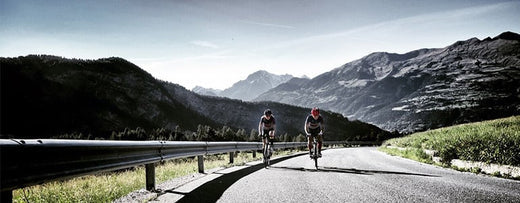
Take a ride around Mont Blanc
Mont Blanc is the highest mountain in the Alps and cycling around it offers mind-blowing views. Press play on the video below and experience what it's like to ride through this incredible landscape!
Alpinists and ice climbers Matthias Scherer and Tanja Schmitt can’t get enough of the mountains. Whether, it’s winter or summer, their lives revolve around preparing for and going on big adventures. To help them physically and mentally prepare for the coming winter, they cycled around Mont Blanc in less than 24 hours. Below, Tanja Schmitt recounts their big day out pedalling.
By Tanja Schmitt
The Tour du Mont Blanc climbs more than 8050 vertical meters over a total distance of 340 km. The route goes through some of the most beautiful alpine passes in the Alps and some of the most spectacular parts of Italy, Switzerland and France. It offers stunning views of the snow-covered flanks of the mighty Mont Blanc (4810m), the highest peak in the Alps.
As mountaineers and ice climbers, the psychological part of our sport has a big impact and the physical demands are also high. Next to basic strength training, regular rock-climbing and dry tooling, endurance training plays a major role in our overall training. For this reason, over summer Matthias and I do a lot of vertical ascent training through mountain running and biking. The idea of cycling non-stop around Mont Blanc was born from the logical step of connecting the passes and roads we’ve gotten to know so well through our training and traveling over the years. And on Sunday, August 30th the time had finally come to take action.
Click here to read more about Matthias Scherer and Tanja Schmitt
With bright headlamps and equipped with several Clif Shot Gels, Clif Shot Bloks and Clif Bars, together with salt-tablets and water, we hit the road at Aymaville and cycled along the empty roads of Aosta towards Grand St. Bernard. Our heartbeat was regular and we cycled in a steady rhythm. Our route lead us from the Col du Gr. St.Bernard over Champex to Martigny. Then over the Col de la Forclaz and on to Chamonix, Le Fayet and St. Gervais to Megève. From there we gained 750 vertical meters to les Saisies and further on to Beaufort. Temperatures during the day went to over 30° C and, correspondingly, the cycling became tougher. On the Cormet de Roselend, I began to suffer from the heat due to an agitating dry cough. But as the evening freshness came on, we got our strength back and enjoyed rolling down the long descent to Bourge-St-Maurice.
The challenge to organize water refills became an unexpected issue. However, after a nerve-racking 30-minute wait in the queue of a nearby McDonalds, we rehydrated and furthermore equipped ourselves with an ice-filled cola! The last verticals up the road of Petit St-Bernard were tackled at dawn. Then the end was in sight and after a spectacular ride down the Col to Prè-St-Didier, we felt like we were flying on the last flat kilometers on the SS26 to Aymaville. On arriving back in Aymaville, our Suunto Ambits showed a time of 19h55min. A wonderful training day in the mountains had come to an end.
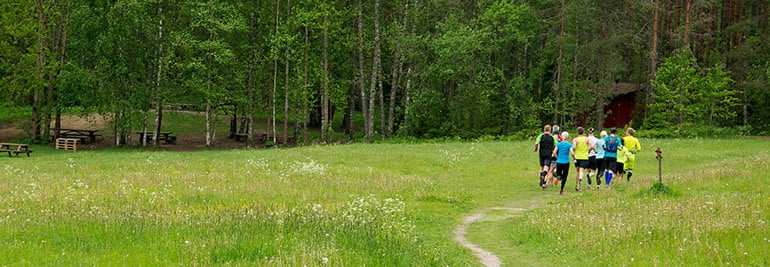
Running with a common goal
Many times adventure or endurance sports can be solitary pursuits. When we share our experiences and challenges with others, we are strengthened. As a new edition to our efforts to help build connections, we will be sharing stories from inspiring groups around the world whose love for sport and adventure not only build camaraderie amongst themselves, but also serve to invigorate and motivate all of us together.
In Suunto’s home country of Finland, trail running has moved from niche to mainstream with incredible speed. Races that had only a handful of runners two years ago, now sell-out to their capacity in hours. Located all over the country, trail races are a natural extension to the almost inherent connection Finns have with nature, from orienteering to cross-country skiing. Vast expanses of forested wilderness and rolling fjells provide countless opportunities to explore.
The Nuuksio Classic trail marathon is one of the most popular races on the calendar, happening the first weekend in September. It is held on the beautiful and varied trails and grey rock of the Nuuksio National Park just outside the capital, Helsinki.
We joined a training run in Nuuksio as runners from all walks of life and levels of experience were preparing for the marathon and getting to know the trail. For many of these runners, race day is the opportunity to challenge oneself and celebrate accomplishments, but the real transformative value of running and community come through the daily training, the scars, the group runs, the early morning miles and getting lost in the forest on a new (or old) trail.
As Ali Leivo, an avid trail runner and community stalwart, says, “while the Finnish trail running community is small, it is like a family. I could shoot off to anywhere in the country and someone would welcome me, not only on their home trails, but into their homes as well.” This community often congregates, and reunites in some of the most iconic national landscapes, prepared for the challenges ahead and sharing their collective energy with one another.
Community encourages us to explore, both our wondrous natural world and within ourselves. As we embrace new connections, our energy combines and propels us forward, and when you are running in the wild it’s always nice to know someone’s got your back.
We’ll return soon with our next instalment of community events. Stay tuned!
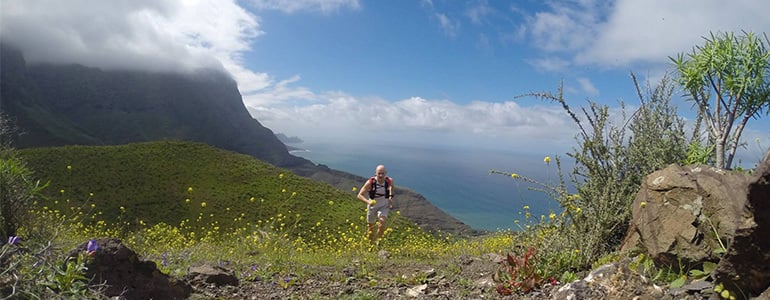
Bees, yoga and sleep – the Gediminas Grinius way of recovery
The best way to recover is different for each individual, says ultra runner Gediminas Grinius. He favors a good night sleep, yoga and beekeeping.
Ultra runner and Suunto athlete Gediminas Grinius hardly has a moment to spare. He works full time, is a husband and father of two and trains to compete in some of the world’s toughest ultra marathons.
The 35–year-old recently won the 125 km Trangrancanaria Ultra Race, breaking the race speed record set by fellow Suunto ambassador Ryan Sandes. More recently he placed fourth at the Western States 100-Mile Endurance Run. With so much training for ultra marathons it can be challenging for him to retain enough energy for his job, wife and two sons. This makes good recovery essential for Gediminas.
Read more recovery tips from Suunto's ambassadors!
“For me, the best remedy is sleep,” he says. “I need between eight and 10 hours of sleep a night to feel good each day. “It's the best and cheapest thing that all runners can do to recover.”
He and his wife also do yoga a few times every week. Running for long distances in the mountains has sometimes been stressful for him, but yoga has taught him how to relax. “First I started to do yoga just to improve my flexibility,” he says. “But I found out it's not really flexibility, it's more about understanding your body and learning to relax.”
To also help him unwind from his busy life, Gediminas keeps bees. There are about 20 beehives around his house in Lithuania. Bee keeping is like a form of meditation to Gediminas. It’s also a great source of energy. “After training I take two big spoons of honey,” he says. “It's great quality carbohydrates mixed with amino acids. “The pollen is a super food, rich with minerals and vitamins. “It's better than any other nutrition supplement that you can find.”
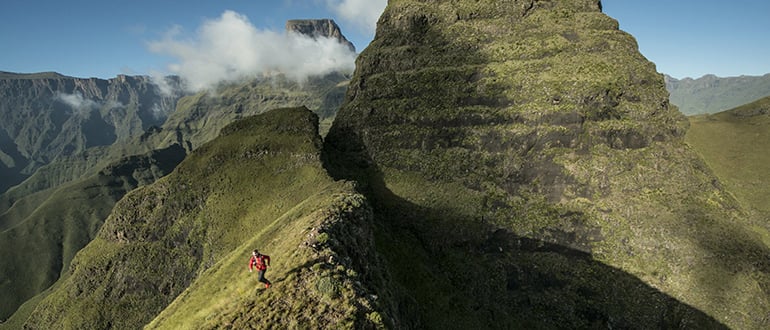
How to handle setbacks like a champion
Being an athlete isn’t all glory and endorphin highs. Just ask champion ultra runner Ryan Sandes. He’s had to pull out of three races recently due to catching glandular fever and struggling to recover. Now he’s taking a break from running to allow his body time to fully heal. We caught up with Ryan and asked him a few questions about how he deals with setbacks.
How are you doing after your recent setbacks?I feel pretty low and disappointed now, but I am focusing on switching off from my setback and not overthinking it too much as that just makes it worse. I am putting a plan in place to fix my health and that is all I can do. I have had a crap year racing, but I have had some epic experiences this year, traveled to some awesome places and it is important to be grateful for that!
Check out Ryan's recovery tips for before and after the race!
Ryan enjoys a soak after announcing he's taking a short break from ultra running to recover. © Ryan SandesHow do athletes often react to a setback, whether injury or illness? It is really frustrating and demoralizing at the time. You think back to all the hard training and effort you have put into a specific goal and then all of a sudden that all disappears. I always try to focus on the positives in the situation and remember that a setback is not the end of the world – it’s just a hurdle on the way to reaching my dreams.
Find out how to use the Suunto Ambit3 to help you recover
Are setbacks always a bad thing or can they be helpful in unexpected ways?
I think it’s actually through our setbacks that we learn the most about ourselves and develop as people. It’s easy when everything is going right, but when you have a major setback it really tests you and when you come out the other side, it makes your achievement that much more rewarding. I find after a big setback I am more focused and determined than ever.
Having unstructured fun is important for recovery. © Ryan SandesWhat do athletes often fear most about setbacks and is this fear necessarily true? It’s a common worry that if you can't train you will lose your fitness and not be ready for an upcoming race, but I believe often the body knows best, and the time off from training helps it to fully recover and get strong after all the training. You will often see an athlete come back really strong after an injury because they have taken enough time off.
Read more recovery tips from Suunto's ambassadors!
Setbacks can make you stronger, Ryan says. © Ryan Sandes
If someone gets an injury, they can sometimes get training withdrawal– how do you recommend working with this? Sitting around with an injury is really frustrating and you get 'cabin fever' as you know all your fellow athletes are outside training. It’s important to focus on fully recovering and doing your rehab so you can come back stronger. If you can’t run and are feeling really frustrated then go outside for an easy hike to be outdoors, but don't push yourself otherwise you will just get injured again.
What recovery really means – from a physiology specialist
What to do if you lose your motivation because of a setback?
If you are feeling a real lack of motivation take a complete break and focus on the fun element of your training or just having fun in general. This could be running for fun with no specific time or training goals or even just hanging out with friends and having a laugh. Take your mind off training and the setback to reboot your system and feel inspired again. Don’t take life too seriously and accept that you will have setbacks along the way.
It's important to keep the big picture in mind, Ryan says. © Ryan SandesDo you have a favorite quote about never giving up?
"If one dream dies, dream another dream. If you get knocked down, get back up and go again." - Joel Osteen










































































